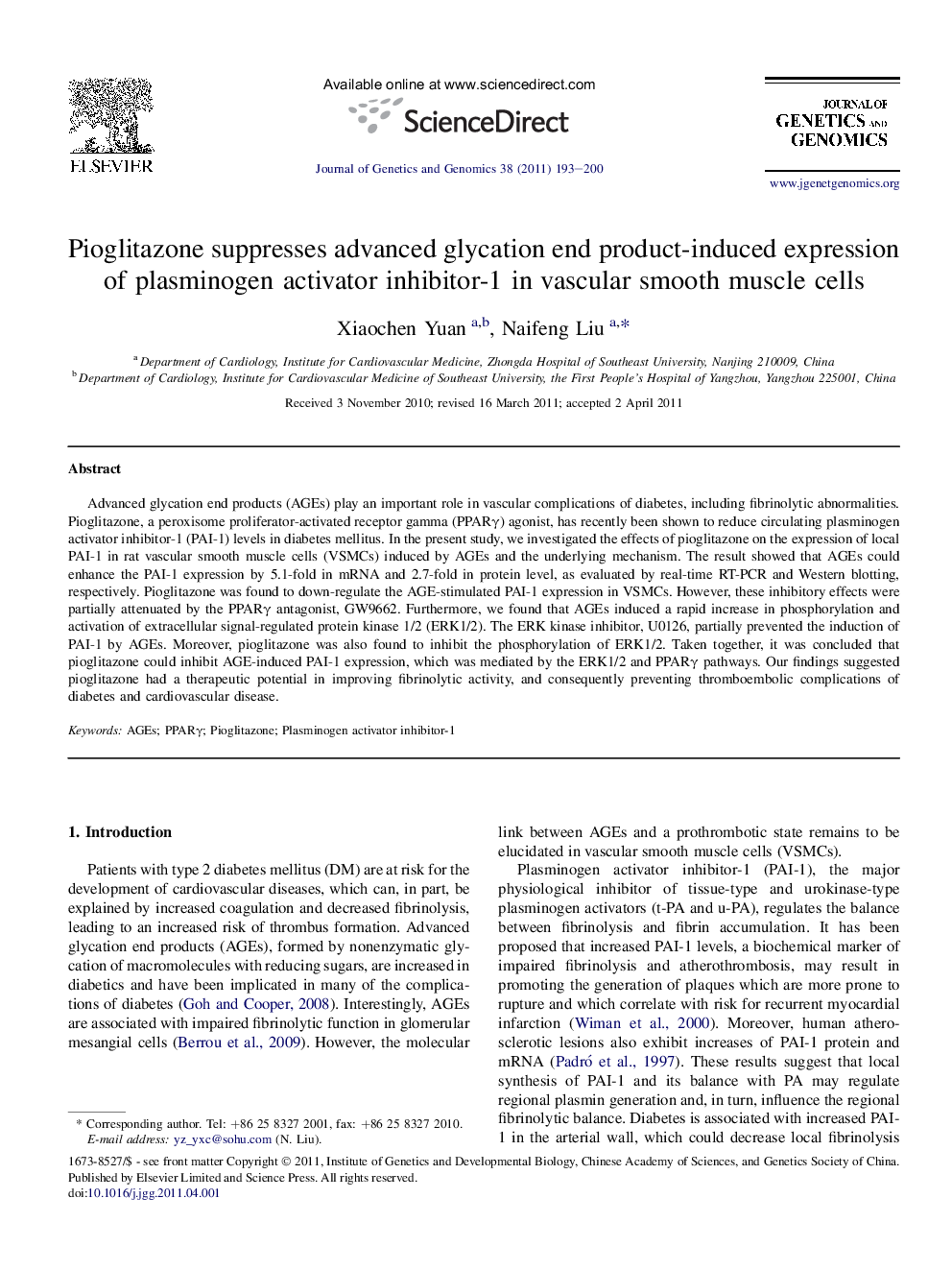| Article ID | Journal | Published Year | Pages | File Type |
|---|---|---|---|---|
| 2787917 | Journal of Genetics and Genomics | 2011 | 8 Pages |
Advanced glycation end products (AGEs) play an important role in vascular complications of diabetes, including fibrinolytic abnormalities. Pioglitazone, a peroxisome proliferator-activated receptor gamma (PPARγ) agonist, has recently been shown to reduce circulating plasminogen activator inhibitor-1 (PAI-1) levels in diabetes mellitus. In the present study, we investigated the effects of pioglitazone on the expression of local PAI-1 in rat vascular smooth muscle cells (VSMCs) induced by AGEs and the underlying mechanism. The result showed that AGEs could enhance the PAI-1 expression by 5.1-fold in mRNA and 2.7-fold in protein level, as evaluated by real-time RT-PCR and Western blotting, respectively. Pioglitazone was found to down-regulate the AGE-stimulated PAI-1 expression in VSMCs. However, these inhibitory effects were partially attenuated by the PPARγ antagonist, GW9662. Furthermore, we found that AGEs induced a rapid increase in phosphorylation and activation of extracellular signal-regulated protein kinase 1/2 (ERK1/2). The ERK kinase inhibitor, U0126, partially prevented the induction of PAI-1 by AGEs. Moreover, pioglitazone was also found to inhibit the phosphorylation of ERK1/2. Taken together, it was concluded that pioglitazone could inhibit AGE-induced PAI-1 expression, which was mediated by the ERK1/2 and PPARγ pathways. Our findings suggested pioglitazone had a therapeutic potential in improving fibrinolytic activity, and consequently preventing thromboembolic complications of diabetes and cardiovascular disease.
